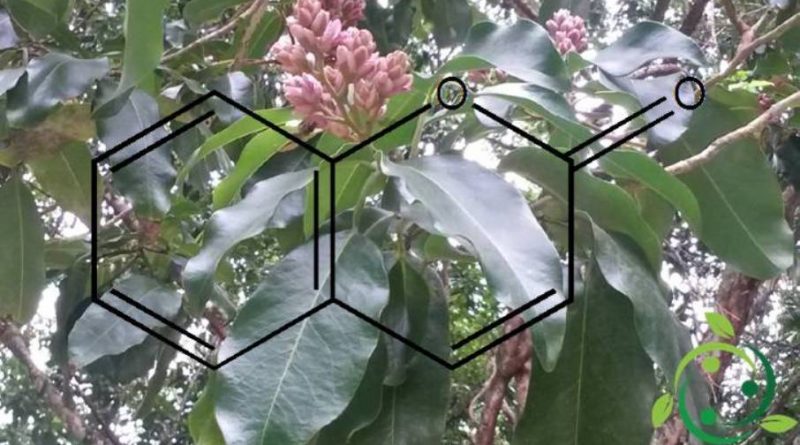Coumarin
Coumarin
Coumarin, whose term in the official IUPAC nomenclature is: 1-benzopyran-2-one is an aromatic compound having a brute or molecular formula: C9H6O2.
This molecule at room temperature is presented in the form of colorless crystals, with the characteristic odor typical of the sweet smell of freshly cut grass.
The coumarin was first isolated in 1820 from Dipteryx odorata which is a fruit-bearing tropical arboreal plant of South America, whose popular name was coumarin.
In fact, Dipteryx odorata seeds can contain up to 10% coumarin, a toxic substance that has been isolated from these seeds. It is believed that taking it in large quantities can cause liver cancer and bleeding.
Coumarin is a substance present in more than 27 plant families and is the progenitor of a class of derivative compounds, called coumarins, which have in common the benzopyranic structure of this molecule. These substances are in fact widely present in nature, both free and combined, especially in Leguminosae, Orchidaceous, Rutaceae and Umbelliferae.
The coumarins are therefore a family of natural substances, widely present in the plant world, characterized by a great heterogeneity that makes them effective for the treatment and prevention of various disorders.
The coumarins can boast the following actions:
– phlebotonic action on the microcirculation: increase capillary resistance and decrease capillary permeability;
– anticoagulant action: block the synthesis of Vitamin K responsible for the blood coagulation processes;
– spasmolytic action on smooth muscles;
– antibacterial and antiviral action;
– photosensitive action: stimulate skin pigmentation.
Particular attention must be paid to the use of coumarinic herbs subjected to the drying phase, given the known function of generating dicumarol in peculiar moments. These compounds tend to be not recommended for subjects who are following anticoagulant (coumadin, sintrom) or anti-platelet treatments (asprin, clopidogrel, etc.).
The European Union has not yet set the maximum daily dose of coumarin. In 2006, the German authorities fixed the TDI (maximum tolerable daily dose) in 0.1 mg / kg body weight, which was subsequently taken over by the Swiss authorities.
Warning: The information given is not medical advice and may not be accurate. The contents are for illustrative purposes only and do not replace medical advice.

